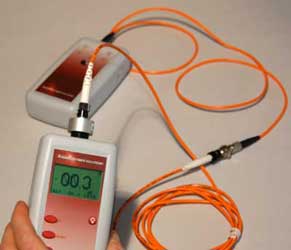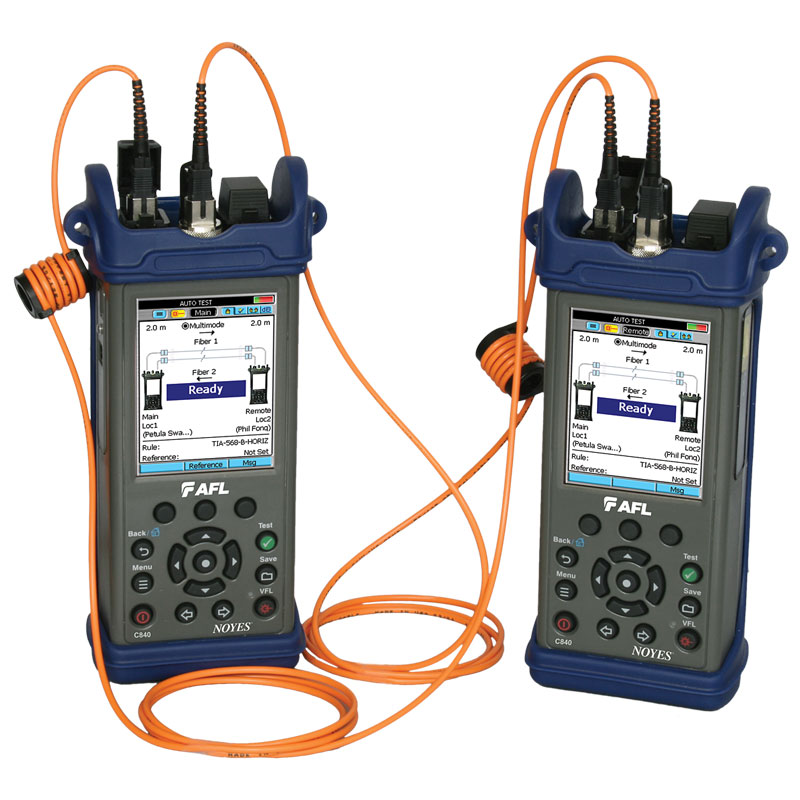The use of ofda improves fibre evaluation with innovative optical technology.
The use of ofda improves fibre evaluation with innovative optical technology.
Blog Article
The Duty of Optical Fiber Screening in Ensuring Top Quality and Efficiency in Connectivity Solutions
In today's rapidly advancing electronic landscape, the value of optical fiber screening can not be overstated, as it works as a cornerstone for making sure the high quality and performance of connection services. By employing a variety of screening methods, including OTDR and loss analyses, organizations can proactively recognize and alleviate possible network problems that might hinder efficiency. Regular testing not only aligns with market requirements but additionally leads the method for improved information transmission. As innovation proceeds to breakthrough, the future of optical fiber screening positions appealing challenges and opportunities that warrant closer assessment.
Significance of Optical Fiber Screening
The importance of optical fiber testing can not be overemphasized in guaranteeing the honesty and efficiency of interaction networks. As the backbone of modern telecoms, optical fibers assist in high-speed information transmission, making their dependability critical to operational success. Evaluating acts as an aggressive measure to recognize possible issues such as signal loss, attenuation, and physical damages, which can jeopardize network performance.
Regular testing enables the confirmation of setup quality and the discovery of flaws that can affect information stability - optical fibre testing equipment. By using strenuous testing procedures, network drivers can alleviate the risks connected with network failings, consisting of downtime and economic losses. Furthermore, optical fibre screening ensures compliance with market criteria and policies, boosting the total quality of service provided to end-users.
Eventually, the systematic analysis of optical fibres adds to the longevity and performance of communication systems. It makes it possible for stakeholders to make informed choices relating to upkeep, upgrades, and troubleshooting. In a landscape where data is significantly essential, prioritizing optical fibre screening is vital to sustaining durable and reliable connectivity solutions, consequently supporting the needs of contemporary digital environments.
Sorts Of Optical Fibre Examinations
Numerous screening approaches are employed to ensure the functionality and dependability of optical fibres within interaction networks. These tests can be extensively classified right into two primary types: installation tests and upkeep examinations.
Installation tests are carried out quickly after the installment of optical fiber wires to confirm their performance and honesty - optical fibre testing equipment. The most common setup examinations consist of Optical Time-Domain Reflectometry (OTDR) examinations, which assess the quality of the fibre by determining faults or breaks, and end-to-end loss tests, which determine the total optical loss from one end of the fiber to the various other
Upkeep tests, on the various other hand, are carried out occasionally to make sure continuous performance and discover prospective problems gradually. These consist of aesthetic inspection, which look for physical damages or improper installations, and continuity examinations, which verify that the signal can go through the fiber without interruption.
Furthermore, progressed tests such as Polarization Setting Dispersion (PMD) and Chromatic Diffusion (CD) examinations can be conducted to review the fiber's performance under numerous problems. By utilizing these varied testing approaches, professionals can preserve high standards of top quality and dependability in optical fiber networks.
Benefits of Regular Examining
Regular screening of optical fibers plays an essential duty in maintaining the total performance and integrity of interaction networks. By conducting regular analyses, organizations can make sure that their fibre optic setups meet industry requirements and run effectively. This positive strategy helps to determine potential weak points and deterioration with time, enabling prompt treatments prior to concerns intensify.

Cost-effectiveness is an additional benefit. By resolving minor problems early, organizations can avoid the high expenses related to significant fixings or system failings. Routine screening also fosters conformity with regulative needs, ensuring that the network complies with necessary security and performance criteria.
Typical Issues Determined
Identifying common concerns in optical fiber networks is essential for preserving ideal efficiency and integrity. Different elements can add to interruptions, including physical damages, inadequate installment techniques, and that site environmental impacts.
Physical damage, such as bends, breaks, or abrasions, can significantly break down signal quality. Improper installment techniques, including excessive tension or inadequate protecting of cords, might bring about raised depletion and loss of connectivity. Furthermore, environmental elements such as temperature level fluctuations, moisture access, and rodent disturbance can endanger the stability of the fibre.
Adapter concerns also often arise, with improper alignment or contamination causing increased insertion loss. Furthermore, splicing errors can introduce substantial signal degradation otherwise executed with precision.

Addressing these common concerns through regular optical fiber screening not only boosts network integrity but also maximizes overall performance, guaranteeing that connectivity options remain robust and reliable.
Future Patterns in Testing
As the demand for high-speed connectivity moved here proceeds to increase, the future of optical fiber screening will significantly concentrate on automation and progressed analytics. The combination of expert system (AI) and device knowing (ML) in testing processes will certainly make it possible for extra effective information analysis and predictive upkeep, decreasing downtime and improving overall network integrity. Automated screening options will certainly improve the assessment and accreditation of fiber networks, decreasing human error and enhancing screening throughput.
Another considerable pattern is the fostering of remote testing innovations. As the release of fiber networks broadens into remote and underserved areas, remote screening capacities will allow professionals to monitor check my site and diagnose network conditions without physical presence, consequently lowering functional prices and enhancing reaction times.
Furthermore, there will certainly be a change towards more comprehensive screening criteria that incorporate not only conventional loss measurements however additionally performance metrics such as latency and transmission capacity application. This holistic approach will certainly promote far better network monitoring and optimization strategies.
As these fads evolve, the optical fiber screening landscape will not just enhance the quality and efficiency of connection solutions however also support the expanding complexities of contemporary communication networks.
Final Thought
In final thought, optical fibre screening offers as a basic part in maintaining the stability and effectiveness of communication networks. The recurring commitment to normal testing not just boosts information transmission yet also aligns with market criteria, fostering integrity in network infrastructures.
Report this page